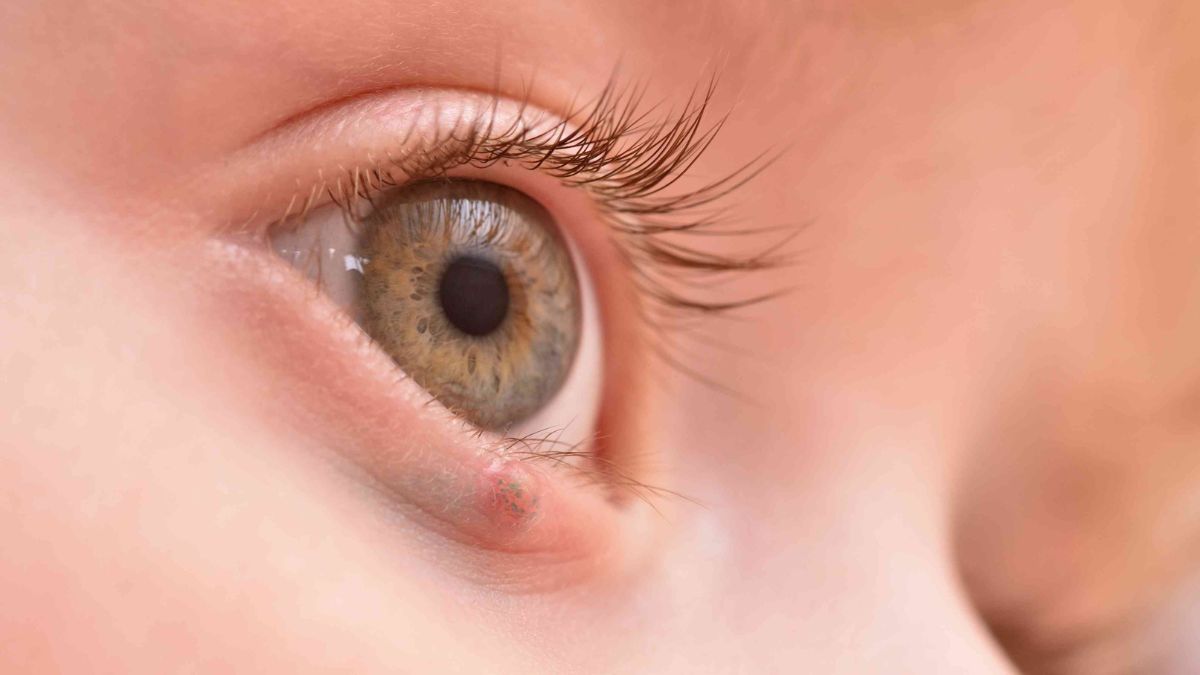Our eyes are windows to the world, but what happens when those windows face obstacles? Eye lesions can significantly affect your vision and overall quality of life. Understanding their impact is crucial for anyone who values clear sight. From benign growths to serious conditions like eye melanoma, knowing the signs, symptoms, and management options empowers you to take control of your eye health. Join us as we explore the intricate relationship between eye lesions and vision—what you need to know to keep those windows healthy and bright!
The Impact of Eye Lesions on Vision: What You Need to Know
Eye lesions can disrupt vision in various ways, from blurriness to complete loss. Understanding their types and potential causes is essential for early detection and effective treatment, ensuring better eye health and quality of life.
Understanding Vision and the Brain
Vision is a complex process involving the brain’s interpretation of light signals. The eyes capture images, while the brain decodes them, creating our perception of the world around us. This intricate partnership shapes our reality.
Anand Moodley
Anand Moodley is a renowned expert in ocular health. His research focuses on eye diseases, including lesions. He advocates for early detection and innovative treatments to preserve vision and improve patient outcomes.
Eye Melanoma
Eye melanoma is a rare but serious cancer affecting the uveal tract. Early detection is crucial, as it can lead to vision loss and other complications if left untreated. Regular eye exams are essential for monitoring health.
Where Eye Melanoma Occurs
Eye melanoma primarily develops in the uveal tract, which includes the iris, ciliary body, and choroid. It can also appear on the conjunctiva or eyelid, affecting various parts of the eye.
When to See a Doctor
If you notice sudden vision changes, persistent eye pain, or unusual growths around your eyes, schedule an appointment with a doctor. Early detection can make all the difference in treatment outcomes.
Cancer Discussions
Cancer discussions can be challenging yet essential. Open conversations about diagnosis, treatment options, and emotional support empower patients and families to make informed choices while navigating the complexities of cancer care.
Eye Injury
Eye injuries can occur from various incidents, such as sports accidents or chemical exposure. Prompt attention is crucial to prevent long-term damage and preserve vision. Always wear protective eyewear during high-risk activities.
Overview
Eye lesions can significantly impact vision, affecting various parts of the eye. Understanding these conditions is crucial for early detection and effective management to preserve sight and overall eye health.
Symptoms and Causes
Symptoms of eye lesions vary widely, including blurred vision, flashes of light, or discomfort. Common causes include infections, trauma, and genetic factors that damage the delicate structures of the eye.
Diagnosis and Tests
Diagnosis of eye lesions often involves comprehensive eye exams, imaging tests like MRI or CT scans, and sometimes biopsies. These methods help identify the type and severity of the lesion affecting vision.
Management and Treatment
Management and treatment of eye lesions depend on the type and severity. Options may include observation, medication, surgery, or radiation therapy. Regular follow-ups with an eye specialist are crucial for monitoring progress.
Prevention
Maintaining regular eye check-ups is crucial. Protect your eyes from UV rays and injuries. A healthy diet rich in vitamins can also help reduce the risk of developing lesions and other vision problems.
Outlook/Prognosis
The outlook for individuals with eye lesions varies widely. Early detection and treatment significantly improve prognosis, while the extent of damage and underlying causes also play crucial roles in long-term vision outcomes.
Optic Neuritis
Optic neuritis involves inflammation of the optic nerve, leading to vision loss or blurriness. It’s often linked with multiple sclerosis and can cause pain during eye movement. Early diagnosis is crucial for effective treatment.
Overview
Eye lesions can significantly impact vision, leading to various symptoms and complications. Understanding their nature helps in early detection and treatment, ensuring better outcomes for affected individuals. Knowledge is crucial for maintaining eye health.
Symptoms and Causes
Eye lesions may present symptoms like blurred vision, dark spots, or discomfort. Common causes include infections, tumors, injuries, and systemic diseases. Early detection is crucial for effective management and treatment options.
Diagnosis and Tests
Diagnosing eye lesions involves a comprehensive eye exam, including visual acuity tests, imaging studies like OCT or MRI, and sometimes biopsies to identify the nature of the lesion effectively.
Management and Treatment
Management and treatment of eye lesions vary by type. Options may include surgery, radiation therapy, or medication. Regular monitoring is essential to adapt strategies based on individual responses and disease progression.
Prevention
Regular eye exams are essential for early detection. Protect your eyes from UV exposure, practice good hygiene, and manage chronic conditions like diabetes to reduce the risk of developing lesions. Stay informed and proactive.
Outlook/Prognosis
The prognosis for patients with eye lesions varies widely depending on the type, location, and severity. Early detection and treatment significantly improve outcomes, emphasizing the importance of regular eye exams and medical consultations.
Eyelid Lesions Diagnosis and Treatment
Eyelid lesions can vary in type and severity. Diagnosis often involves physical examination and possibly biopsy. Treatment options may include surgical removal, topical medications, or monitoring, depending on the lesion’s nature and risk factors.
Types of Eyelid Lesions
Eyelid lesions vary widely, including benign growths like chalazia and seborrheic keratosis, as well as malignant types such as basal cell carcinoma. Understanding these differences is crucial for effective diagnosis and treatment.
Causes and Risk Factors
Eye lesions can result from various factors, including genetic predisposition, exposure to UV light, viral infections, trauma, and underlying health conditions. Lifestyle choices also play a significant role in increasing risk.
Diagnosis of Eyelid Lesions
Diagnosis of eyelid lesions typically involves a thorough eye examination. An ophthalmologist may use specialized tools to assess the lesion’s characteristics and determine if further testing or biopsy is needed for accurate diagnosis.
Treatment Options for Eyelid Lesions
Treatment options for eyelid lesions vary based on the type. They may include surgical removal, cryotherapy, laser therapy, or topical medications to reduce inflammation and promote healing. Regular follow-up is essential for monitoring any changes.
Prevention and Follow-up Care
Regular eye exams are crucial for early detection. Protect your eyes from UV rays and injury. Follow up on any unusual symptoms promptly to ensure timely intervention and maintain optimal eye health.
Lesions of the Eye: Symptoms, Causes, and Treatments
Ocular lesions can manifest as growths or discolorations. Symptoms include blurred vision, pain, and sensitivity to light. Causes range from infections to tumors, with treatments varying based on the type and severity of the lesion.
What are Ocular Lesions?
Ocular lesions are abnormal growths or damages in the eye. They can affect various structures, leading to symptoms like vision changes. Early detection is crucial for effective treatment and preserving sight.
Symptoms of Ocular Lesions
Symptoms of ocular lesions can vary widely. Common signs include blurred vision, floaters, eye pain, redness, and swelling. Some may also experience light sensitivity or changes in visual perception, indicating the need for medical evaluation.
Causes of Ocular Lesions
Ocular lesions can arise from various factors, including infections, trauma, inflammatory diseases, genetic predispositions, and exposure to harmful substances. Each cause may lead to different types of lesions affecting vision uniquely.
Treatment for Ocular Lesions
Treatment for ocular lesions varies based on type and severity. Options may include medication, laser therapy, or surgical intervention to remove the lesion and preserve vision while minimizing complications. Early detection enhances success rates.
Types of Ocular Lesions
Ocular lesions can vary widely, including benign growths like cysts and warts, as well as more serious conditions such as tumors or infections. Each type requires specific attention for diagnosis and treatment.
Can Brain Tumors Affect Your Vision?
Brain tumors can significantly impact vision. They may press on optic nerves, leading to blurred sight or even loss of vision. Early detection is crucial for preserving eyesight and managing symptoms effectively.
How do Brain Tumors Cause Eye Problems?
Brain tumors can pressure surrounding nerves and brain structures, disrupting normal visual pathways. This interference may lead to blurred vision, double vision, or even partial loss of sight as the tumor grows and evolves.
Can Brain Cancer Cause Blindness?
Brain cancer can impact vision by exerting pressure on the optic nerves or affecting brain regions responsible for visual processing. This interference may lead to blurred vision, partial blindness, or complete loss of sight.
What Types of Brain Tumors Affect Vision?
Brain tumors affecting vision include gliomas, meningiomas, and pituitary adenomas. These growths can press on optic nerves or areas of the brain responsible for visual processing, leading to various sight issues.
Vision Loss Neurological
Neurological vision loss can result from various brain conditions. Symptoms may include blurred vision or difficulty focusing. Understanding the underlying causes is vital for effective management and treatment options tailored to individual needs.
Symptoms of Neurological Vision Loss
Neurological vision loss can manifest as blurred vision, double vision, or difficulty in focusing. You might also experience blind spots or changes in color perception, impacting daily activities and overall quality of life.
Causes of Neurological Vision Loss
Neurological vision loss can be caused by various factors, including strokes, traumatic brain injuries, tumors, and multiple sclerosis. These conditions disrupt the pathways between the eyes and the brain, leading to visual impairments.
Range of Neurological Vision Loss
Neurological vision loss varies widely. It can range from mild blurriness to complete blindness, depending on the extent and location of brain damage impacting visual processing areas. Each case presents unique challenges for affected individuals.
Homonymous Hemianopia
Homonymous hemianopia is a visual field loss affecting the same side of both eyes. This condition often results from brain injuries or strokes, disrupting the pathways responsible for processing visual information.
Treatment for Neurological Vision Loss
Treatment options for neurological vision loss depend on the underlying cause. If an eye lesion results from a condition like optic neuritis, treatment may include corticosteroids to reduce inflammation. For brain tumors, surgery or radiation therapy may be necessary.
Rehabilitation programs can help patients adapt to changes in their vision. Vision therapy is another option that focuses on improving visual skills and processing.
Early diagnosis plays a critical role in effective management. Regular check-ups with an eye care professional are essential for those at risk of neurological issues affecting vision. Staying informed about symptoms enables timely intervention, potentially preserving sight and quality of life.











